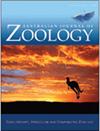减少放牧压力或捕食是否能保护kowaris?迪亚曼蒂纳国家公园的案例研究
IF 1
4区 生物学
Q3 ZOOLOGY
引用次数: 1
摘要
摘要牲畜造成了澳大利亚许多物种的减少。然而,在一年生植物物种占主导地位的干旱环境中,它们的影响可能较小。对生活在Diamantina国家公园的小型肉食性有袋动物Kowaris (Dasyuroides byrnei)进行了监测,以评估牛群减少后生态系统恢复的成功程度。在研究区域内的10个地点发现了Kowaris:其中5个是在该地区成为国家公园之前记录的,另外5个是“新”地点。在其中一处历史遗址中没有发现任何kowaris。据估计,2007年至2009年的密度为每平方公里1至2.5克瓦里。结果表明,随着放牧压力的减少,种群数量可能会增加。然而,在研究期间,啮齿动物和食肉动物的数量激增,相应地,kowari的探测数量下降。自2012年以来,在任何一个研究地点都没有检测到Kowaris。这些结果表明,保护野生动物既需要对自上而下的因素进行管理,也需要对自下而上的因素进行管理。这项工作进一步强调,如果要在景观尺度上理解复杂生态过程之间的相互作用,从而有效地管理像kowari这样的濒危物种,就需要进行重复的长期研究。本文章由计算机程序翻译,如有差异,请以英文原文为准。
Does reducing grazing pressure or predation conserve kowaris? A case study at Diamantina National Park
Abstract. Livestock contributes to the decline of many species in Australia. However, they may have less impact in arid environments, where annual plant species dominate. Kowaris (Dasyuroides byrnei), a small carnivorous marsupial, living on Diamantina National Park were monitored to assess the success of ecosystem recovery following a reduction in cattle. Kowaris were found at 10 locations within the study area: five where they had been recorded prior to the area becoming a national park and five ‘new’ locations. No kowaris were found at one of the historical sites. The density was estimated to range from 1 to 2.5 kowaris per square kilometre from 2007 to 2009. The results suggest that the population likely increased following a reduction in grazing pressure. However, a boom in rodents and predators occurred during the study with a corresponding decline in kowari detections. Kowaris have not been detected at any of the study sites since 2012. These results suggest that management of top-down factors as well as bottom-up factors are required to conserve kowaris. The work further highlights the need for replicated, long-term studies if the interactions between complex ecological processes, at a landscape scale, are to be understood so that threatened species, like the kowari, can be managed effectively.
求助全文
通过发布文献求助,成功后即可免费获取论文全文。
去求助
来源期刊
CiteScore
2.40
自引率
0.00%
发文量
12
审稿时长
>12 weeks
期刊介绍:
Australian Journal of Zoology is an international journal publishing contributions on evolutionary, molecular and comparative zoology. The journal focuses on Australasian fauna but also includes high-quality research from any region that has broader practical or theoretical relevance or that demonstrates a conceptual advance to any aspect of zoology. Subject areas include, but are not limited to: anatomy, physiology, molecular biology, genetics, reproductive biology, developmental biology, parasitology, morphology, behaviour, ecology, zoogeography, systematics and evolution.
Australian Journal of Zoology is a valuable resource for professional zoologists, research scientists, resource managers, environmental consultants, students and amateurs interested in any aspect of the scientific study of animals.
Australian Journal of Zoology is published with the endorsement of the Commonwealth Scientific and Industrial Research Organisation (CSIRO) and the Australian Academy of Science.

 求助内容:
求助内容: 应助结果提醒方式:
应助结果提醒方式:


